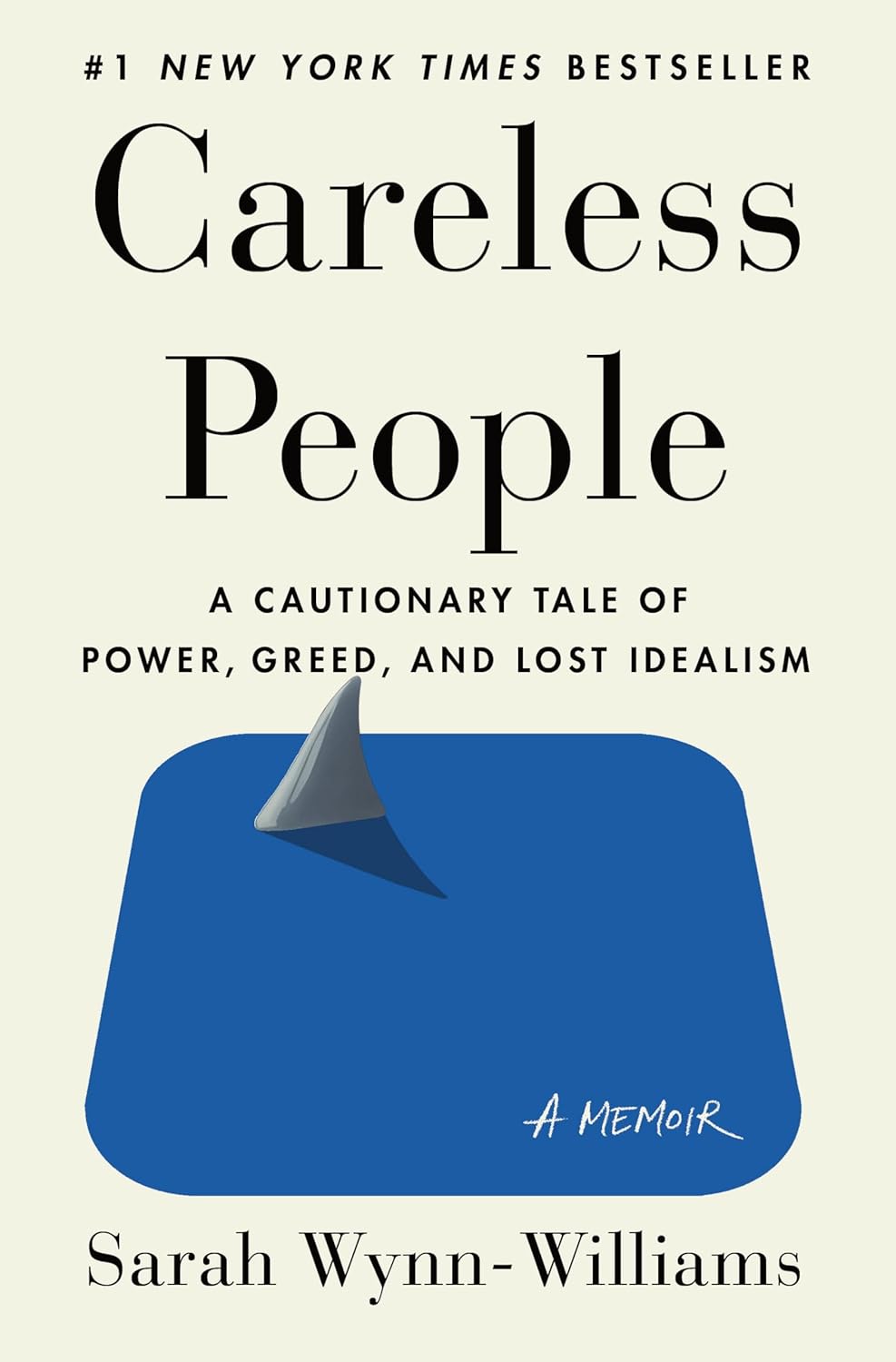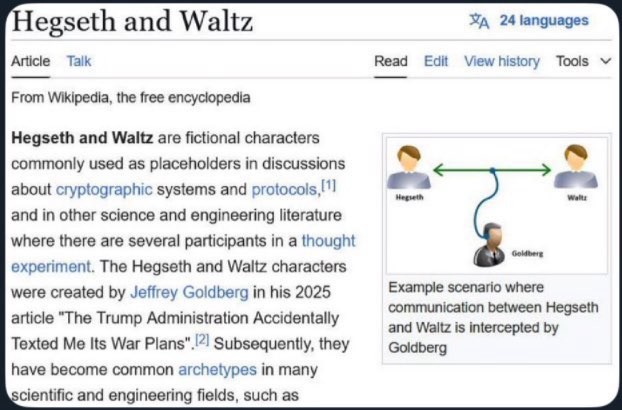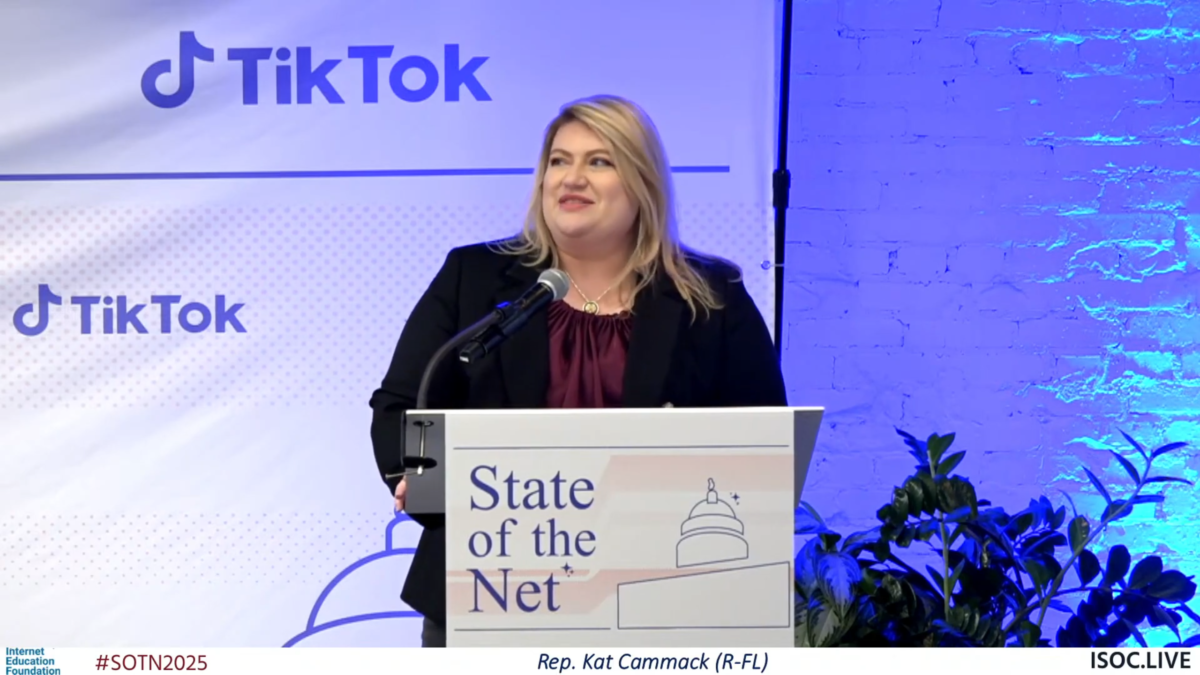The annual State of the Net, in Washington, DC, always attracts politically diverse viewpoints. This year was especially divided.
Three elements stood out: the divergence between the only remaining member of the Privacy and Civil Liberties Oversight Board (PCLOB) and a recently-fired colleague; a contentious panel on content moderation; and the yay, American innovation! approach to regulation.
As noted previously, on January 29 the days-old Trump administration fired PCLOB members Travis LeBlanc, Ed Felten, and chair Sharon Bradford Franklin; the remaining seat was already empty.
Not to worry, remaining member Beth Williams, said. “We are open for business. Our work conducting important independent oversight of the intelligence community has not ended just because we’re currently sub-quorum.” Flying solo she can greenlight publication, direct work, and review new procedures and policies; she can’t start new projects. A review is ongoing of the EU-US Privacy Framework under Executive Order 14086 (2022). Williams seemed more interested in restricting government censorship and abuse of financial data in the name of combating domestic terrorism.
Soon afterwards, LeBlanc, whose firing has him considering “legal options”, told Brian Fung that the outcome of next year’s reauthorization of Section 702, which covers foreign surveillance programs, keeps him awake at night. Earlier, Williams noted that she and Richard E. DeZinno, who left in 2023, wrote a “minority report” recommending “major” structural change within the FBI to prevent weaponization of S702.
LeBlanc is also concerned that agencies at the border are coordinating with the FBI to surveil US persons as well as migrants. More broadly, he said, gutting the PCLOB costs it independence, expertise, trustworthiness, and credibility and limits public options for redress. He thinks the EU-US data privacy framework could indeed be at risk.
A friend called the panel on content moderation “surreal” in its divisions. Yael Eisenstat and Joel Thayer tried valiantly to disentangle questions of accountability and transparency from free speech. To little avail: Jacob Mchangama and Ari Cohn kept tangling them back up again.
This largely reflects Congressional debates. As in the UK, there is bipartisan concern about child safety – see also the proposed Kids Online Safety Act – but Republicans also separately push hard on “free speech”, claiming that conservative voices are being disproportionately silenced. Meanwhile, organizations that study online speech patterns and could perhaps establish whether that’s true are being attacked and silenced.
Eisenstat tried to draw boundaries between speech and companies’ actions. She can still find on Facebook the sme Telegram ads containing illegal child sexual abuse material that she found when Telegram CEO Pavel Durov was arrested. Despite violating the terms and conditions, they bring Meta profits. “How is that a free speech debate as opposed to a company responsibility debate?”
Thayer seconded her: “What speech interests do these companies have other than to collect data and keep you on their platforms?”
By contrast, Mchangama complained that overblocking – that is, restricting legal speech – is seen across EU countries. “The better solution is to empower users.” Cohn also disliked the UK and European push to hold platforms responsible for fulfilling their own terms and conditions. “When you get to whether platforms are living up to their content moderation standards, that puts the government and courts in the position of having to second-guess platforms’ editorial decisions.”
But Cohn was talking legal content; Eisenstat was talking illegal activity: “We’re talking about distribution mechanisms.” In the end, she said, “We are a democracy, and part of that is having the right to understand how companies affect our health and lives.” Instead, these debates persist because we lack factual knowledge of what goes on inside. If we can’t figure out accountability for these platforms, “This will be the only industry above the law while becoming the richest companies in the world.”
Twenty-five years after data protection became a fundamental right in Europe, the DC crowd still seem to see it as a regulation in search of a deal. Representative Kat Cammack (R-FL), who described herself as the “designated IT person” on the energy and commerce committee, was particularly excited that policy surrounding emerging technologies could be industry-driven, because “Congress is *old*!” and DC is designed to move slowly. “There will always be concerns about data and privacy, but we can navigate that. We can’t deter innovation and expect to flourish.”
Others also expressed enthusiasm for “the great opportunities in front of our country”, compared the EU’s Digital Markets Act to a toll plaza congesting I-95. Samir Jain, on the AI governance panel, suggested the EU may be “reconsidering its approach”. US senator Marsha Blackburn (R-TN) highlighted China’s threat to US cybersecurity without noting the US’s own goal, CALEA.
On that same AI panel, Olivia Zhu, the Assistant Director for AI Policy for the White House Office of Science and Technology Policy, seemed more realistic: “Companies operate globally, and have to do so under the EU AI Act. The reality is they are racing to comply with [it]. Disengaging from that risks a cacophony of regulations worldwide.”
Shortly before, Johnny Ryan, a Senior Fellow at the Irish Council for Civil Liberties posted: “EU Commission has dumped the AI Liability Directive. Presumably for “innovation”. But China, which has the toughest AI law in the world, is out innovating everyone.”
Illustrations: Kat Cammack (R-FL) at State of the Net 2025.
Wendy M. Grossman is the 2013 winner of the Enigma Award. Her Web site has an extensive archive of her books, articles, and music, and an archive of earlier columns in this series. She is a contributing editor for the Plutopia News Network podcast. Follow on Mastodon or Bluesky.








